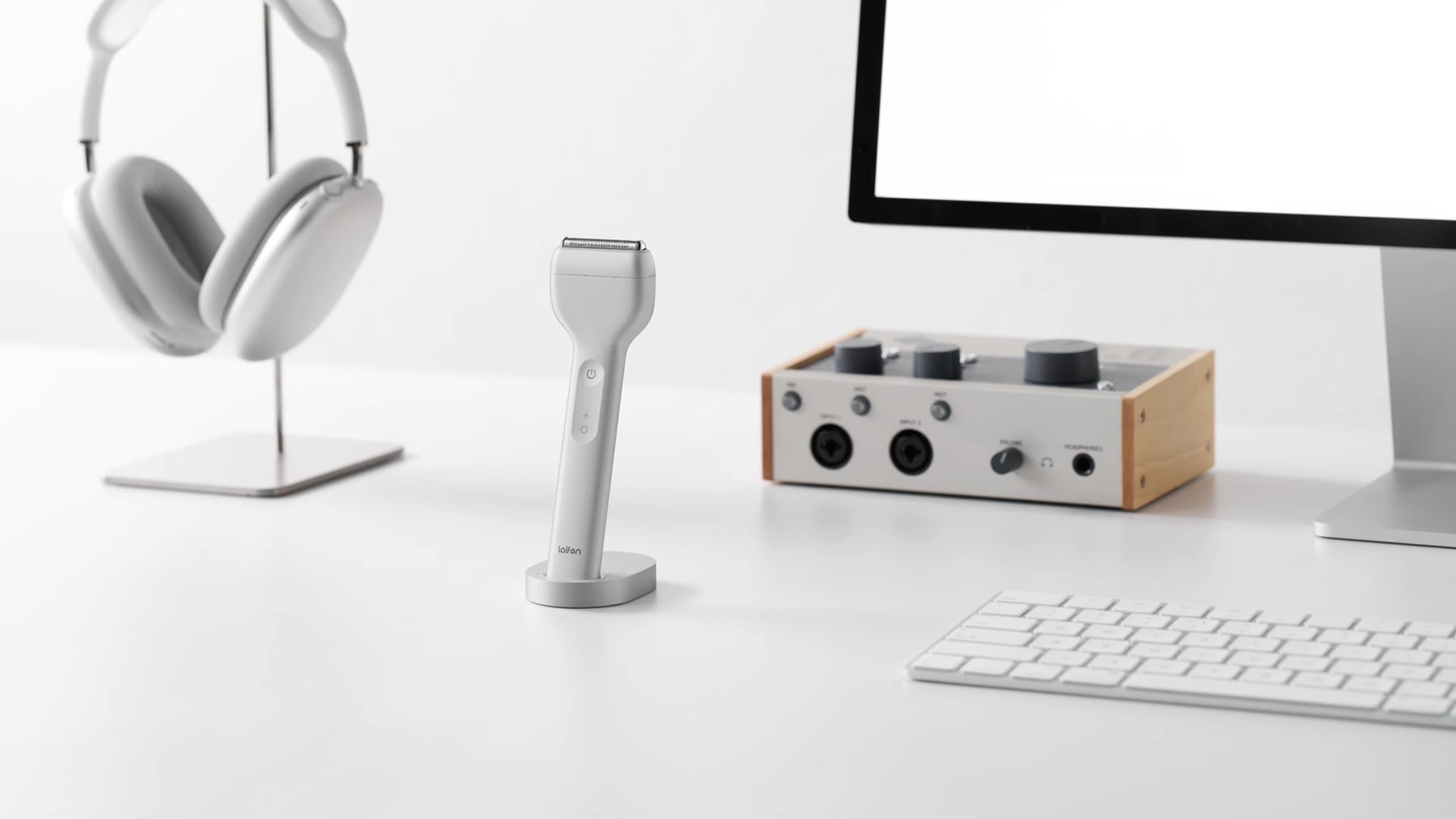After six years in business, Laifen has rounded out its lineup of personal care essentials by introducing its third major product category: the electric shaver.
At its 2025 product launch event on May 23, Laifen founder Ye Hongxin unveiled a range of specs for the company’s new shaver: CNC (computer numerical control) machining, proprietary linear motors, and a 120-minute battery life, among others.
Laifen’s ambitions in the shaving space are unambiguous.
The company said it spent four years developing the new product, investing around RMB 100 million (USD 14 million) in the process, incorporating several high-end manufacturing techniques. One of these is stainless steel mesh stamping, which is considered a core challenge in the electric shaver industry. Before Laifen, only Panasonic had managed to master it. Now Laifen joins that short list.
“Is the technique really that difficult? We were outsiders too. Once we got in, we realized the mesh holes are tiny and still have to stay sharp. It’s actually very difficult to achieve,” Ye said.
This level of R&D investment is unusual in China’s personal care appliance market, where mature supply chains and low entry barriers have spawned intense competition and rapid iteration.
For a young company, committing substantial resources over several years is no easy feat. “If we’re just going for a single-digit market share, then it’s not worth the effort. We’re aiming for something much bigger,” Ye said.
The shaving market is already cutthroat and crowded. Stepping in demands strength in distribution, marketing, and capital. For Laifen, that means there’s little room for error.
A shaver worth losing money on
For Ye, making the shaver is a natural next step as it is aligned with Laifen’s existing technology.
The company made its name in high-speed hair dryers, building its own motor to compete with Dyson. That breakthrough gave Laifen significant traction and briefly made it one of China’s fastest-growing consumer electronics brands.
The new T1 Pro and P3 Pro shavers are powered by the L1 and L2 linear motors, both developed in-house. But these motors are not off-the-shelf components. According to Laifen, it overhauled the motor’s internal structure, swapping traditional plastic springs for metallic helical ones that produce stronger rebound forces, improving cutting efficiency while conserving power.

Both models are also equipped with a PID (proportional-integral-derivative) dynamic compensation algorithm. This system senses beard density and adjusts power output in real time, ensuring consistent performance regardless of skin type or facial hair texture.
The T1 Pro combines nickel mesh with stainless steel blades, using a 148.48-degree internal blade angle to reduce tugging during close shaves. The P3 Pro employs a triple-blade system with two deep short-hair cutters and one flexible long-hair blade to accommodate a variety of beard types.
Laifen isn’t targeting the bottom of the market. The T1 Pro starts at RMB 499 (USD 69.9), while the P3 Pro starts at RMB 699 (USD 97.9). At these price points, volume is harder to achieve. Over 70% of China’s premium shaver segment is dominated by Philips and Braun. Below RMB 300 (USD 42), local brands are locked in a price war.
“People see RMB 699 and think that’s not cheap, but our margins are actually very slim. We crunched the numbers. This year, we’re almost guaranteed to lose money on it,” Ye told media outlets including 36Kr. “But we’re taking the long view. We want this product to be a serious contender.”

An expensive ticket to the table
Laifen is willing to absorb losses to gain market presence.
According to data from All View Cloud (AVC), online retail sales of electric shavers in 2024 reached RMB 8.61 billion (USD 1.2 billion), down 8.1% year-on-year (YoY). Compared to other small appliances like kitchen gear, hair dryers, and vacuum cleaners, electric shavers posted the lowest revenue and the steepest decline.
Flyco, one of China’s leading shaver brands, saw revenue and net profit fell significantly last year. Its net profit was halved, resulting in the worst result in a decade. Personal care appliances like shavers, high-speed hair dryers, and toothbrushes account for 95% of Flyco’s revenue. In 2024, that segment brought in RMB 3.96 billion (USD 554.4 million), down 17.05% from the year prior.
Flyco’s dual-brand approach—positioning Poree for budget-conscious consumers and Flyco for the premium segment—has yet to yield the intended results. As market saturation deepens, the company’s standing faces mounting pressure.
That situation, perhaps, also reflects a broader trend: price wars are the norm in this fiercely competitive industry.
Laifen is betting on innovation to break through, and it’s a strategy that requires top-tier marketing.
The company’s performance in the high-speed hair dryer space hints at its potential. In 2022, Laifen posted RMB 290 million (USD 40.6 million) in sales from that line alone, marking a tenfold year-on-year jump. Its Singles’ Day sales soared from RMB 20 million (USD 2.8 million) in 2021 to RMB 290 million in 2022, and RMB 440 million (USD 61.6 million) in 2023.
Grassroots marketing helped drive that growth.
Ye often shares his origin story as part of the brand narrative: growing up poor, scavenging trash as a child, working on factory lines at 17. In 2007, he rode China’s e-commerce boom on Taobao and made over RMB 10 million (USD 1.4 million), only to lose it all chasing projects like manned aircraft and electric scooters.
Those experiences, he says, shaped his mindset. His early struggles instilled a desire to democratize access to technology. E-commerce taught him how to understand users. And his foray into aviation sharpened his motor engineering skills. That convergence led to Laifen and its first breakthrough product.
In the hair dryer market, Dyson had already done the heavy lifting of educating consumers. Laifen merely needed to execute well with a competitive local product.
But the shaving market lacks a defining player. That absence makes Laifen’s path forward less certain, and far more difficult to navigate.
KrASIA Connection features translated and adapted content that was originally published by 36Kr. This article was written by Leslie Zhang for 36Kr.
